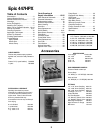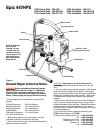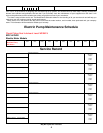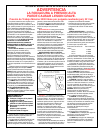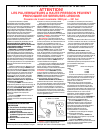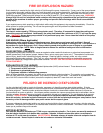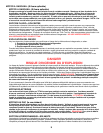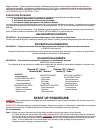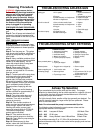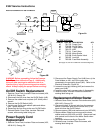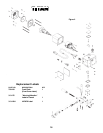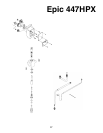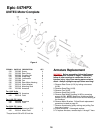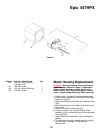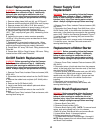
dégâts matériels. Certains produits d'entretien, revêtements, peintures et autres liquides contiennent des solvants à
hydrocarbure halogéné. Les appareils pulvérisateurs de la Titan Tool Inc. comportent des pièces en aluminium et des
composants galvanisés sensibles aux solvants à hydrocarbure halogéné. N’EMPLOYER PAS D’HYDROCARBURES
HALOGÉNÉS DANS LE MATÉRIEL TITAN.
EXPLICATION DU RISQUE
Le danger que présentent les solvants à hydrocarbure halogéné se caractérise par trois éléments clés:
1. La présence de solvants à hydrocarbure halogéné
2. La présence de pièces en aluminium ou galvanisées
3. Un matériel capable de supporter des pressions élevées
La combinaison de ces trois éléments peut donner lieu à une explosion extrêmement violente. La réaction peut se produire
en présence d'une quantité minime d'aluminium ou de métal galvanisé. En fait, la moindre trace d'aluminium en constitue
déjà trop.
La réaction est imprévisible. Toute utilisation antérieure de solvant à hydrocarbure halogéné n'ayant donné lieu à
aucun incident (corrosion ou explosion) NE CONSTITUE NULLEMENT un signe de sécurité.
HALOGENATED SOLVENTS
DEFINITION -- Any hydrocarbon solvent containing any of the elements as listed below:
Consult your material supplier to determine whether your solvent or coating contains Halogenated Hydrocarbon Solvents.
SOLVENTES HALOGENADOS
DEFINICION -- Cualquier solvente a base de hidrocarburos que contenga cualquiera de estos elementos:
EJEMPLOS (lista parcial):
Consulte la información suministrada por su proveedor de materiales para determinar si un solvente o revestimiento
contiene solventes de Hidrocarburos Halogenados.
SOLVANTS HALOGÉNÉS
DÉFINITION -- Tout solvant à hydrocarbure contenant l'un des éléments suivants:
EXEMPLES (liste incomplete):
Pour déterminer si vos solvants ou revêtements contiennent des solvants a hydrocarbure halogéné, consultez votre
fournisseur.
Fluorine (F) "-fluor-" Chlorine (CI) "-chloro-"
Bromine (Br) "-bromo-" Iodine (I) "-Iodo-"
START UP PROCEDURE
WARNING: High pressure device, thoroughly read and understand the warning section located in the owner's manual and
the label on the sprayer.
IMPORTANT: Whenever starting or cleaning this sprayer, always reduce engine or motor speed. Additionally, never operate
this sprayer for more than 10 seconds without fluid, this can cause unnecessary wear to the packings.
Do not operate dry.
Step 1: Before you plug in the power cord to the electrical outlet or start the gas engine, do the following:
A. Tighten suction and return hoses, then install a minimum of 50' (15m) of nylon airless spray hose and airless gun.
Do not install tip yet, or remove if installed. WARNING: If you are supplying your own hoses and spray gun, be sure
they are electrically grounded and rated for at least 3200 psi (221 bar) working pressure, and that the gun has a tip
guard. This is to reduce the risk of serious bodily injury caused by static sparking and fluid injection or
overpressurization, causing a component rupture.
EXAMPLES
(not all-inclusive):
FLUOROCARBON SOLVENTS:
Dichlorofluoromethane
Trichlorofluoromethane
BROMINATED SOLVENTS:
Ethylene dibromide
Methylene chlorobromide
Methyl bromine
IODINATED SOLVENTS:
N-butyl iodide
Methyl iodide
Ethyl iodide
Propyl iodide
CHLORINATED SOLVENTS:
Carbon tetrachloride
Chloroform
Ethylene dichloride
METHYLENE CHLORIDE or
DICHLOROMOETHANE
Monochlorobenzene
Orthodichlorobenzene
Perchloroethylene
TRICHLOROETHANE
Trichloroethylene
Monochlorotoluene
10



